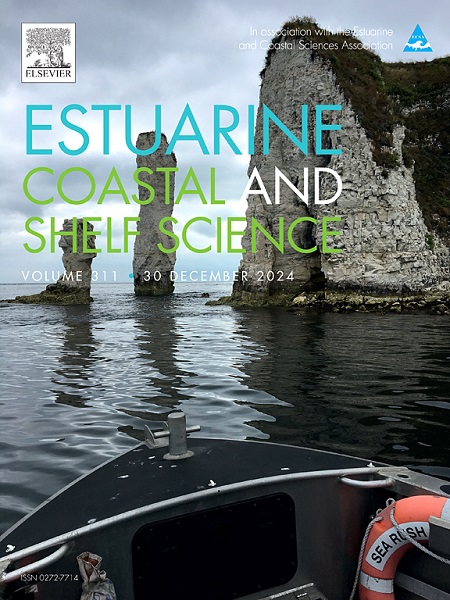Predicting predator abundance from prey in estuaries: Insights from single and joint species distribution modeling
IF 2.6
3区 地球科学
Q1 MARINE & FRESHWATER BIOLOGY
引用次数: 0
Abstract
Species occurrence and abundance is determined by both abiotic and biotic factors. Yet, species distribution models (SDMs) that rely on species-environment responses to form inferences about and predictions for species of interest, often ignore the effect of prey on predator distribution. There has been recent effort to consider these effects and advance SDMs particularly through the use of spatiotemporal models. However, these models have not been tested extensively in estuarine systems. We used fisheries-independent data to understand if prey abundance helps explain red drum, southern kingfish and black drum abundance in addition to the environment in a North Carolina estuarine system. We modeled these predators of blue crabs due to the decline in blue crab populations in North Carolina, once constituting the most lucrative fishery in the state. The distribution of all three predators was best explained by abiotic variables alongside either blue crab or total prey abundance. We tested the ability of two modeling approaches, single SDMs and joint SDMs, to make inferences and predictions of predator distribution. By comparing modeling types with different combinations of abiotic variables, total prey abundance, and blue crab abundance, we found consistency in the best fit model across modeling approaches for two of the three predators. Single SDMs often outperformed joint SDMs when predicting abundance. As our joint SDM approach leveraged conditional prediction, we asked if an increase in spatial resolution and prey information improved predictive performance. Although there was a slight improvement as more observations were included, joint models still provided weak predictions. With the advance of novel modeling techniques, we must consider tradeoffs between model choice, covariate selection, spatial scale, and data types.

求助全文
约1分钟内获得全文
求助全文
来源期刊
CiteScore
5.60
自引率
7.10%
发文量
374
审稿时长
9 months
期刊介绍:
Estuarine, Coastal and Shelf Science is an international multidisciplinary journal devoted to the analysis of saline water phenomena ranging from the outer edge of the continental shelf to the upper limits of the tidal zone. The journal provides a unique forum, unifying the multidisciplinary approaches to the study of the oceanography of estuaries, coastal zones, and continental shelf seas. It features original research papers, review papers and short communications treating such disciplines as zoology, botany, geology, sedimentology, physical oceanography.

 求助内容:
求助内容: 应助结果提醒方式:
应助结果提醒方式:


